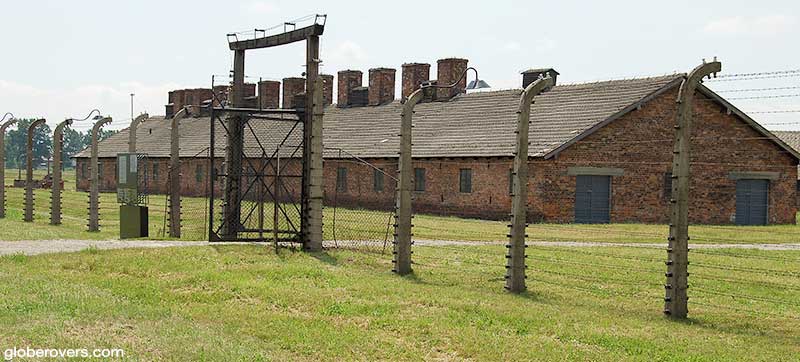
Your history class on Cambodia may be a long way back, but if you have seen the 1984 British drama film about the Khmer Rouge regime in Cambodia and the massive atrocities they committed then you will have some idea of what “The Killing Fields” is all about.
By visiting one of the actual locations just outside Phnom Penh, Cambodia’s capital, you will experience something reminiscent of the Nazi concentration camps such as Auschwitz II-Birkenau located in Poland.
What is the “The Killing Fields”
“The Killing Fields” refers to several locations in Cambodia where the regime of the Khmer Rough sent people from across the country into short-term labour camps where some were swiftly executed. Compared with Nazi camps such as Auschwitz II-Birkenau, the Cambodian Killing Fields had limited facilities which were mostly destroyed during the liberation by the Vietnamese army.
In Phnom Penh, a former high school was converted into a secret prison named S-21 which now serves as a fairly basic museum (Tuol Sleng Genocide Museum) that showcases mostly empty jail cells and many large boards displaying the faded photos of the executed prisoners – young and old.
History of the Cambodian Killing Fields
Lets take a quick look at the history of the Cambodian Killing Fields:
Turn back time to the period of the Cambodian Civil War (1969–1975) when the forces of the Communist Party (the Khmer Rouge) and their allies in the Democratic Republic of Vietnam (North Vietnam) and the Viet Cong (in southern Vietnam and southern Cambodia) were fighting against the government forces of Cambodia which had the support of both the U.S.A and the Republic of Vietnam (South Vietnam).
As the Americans eventually realised that the Vietnam war was a costly battle, they declared on April 12,
“The United States ‘abandoned Cambodia and handed it over to the butcher’
John Gunther Dean, United States Ambassador to the Khmer Republic (1974-1975)
After the Americans left Vietnam, the Cambodian government decided to move the seat of government to Oddar Meanchay Province in the northwest of the country.
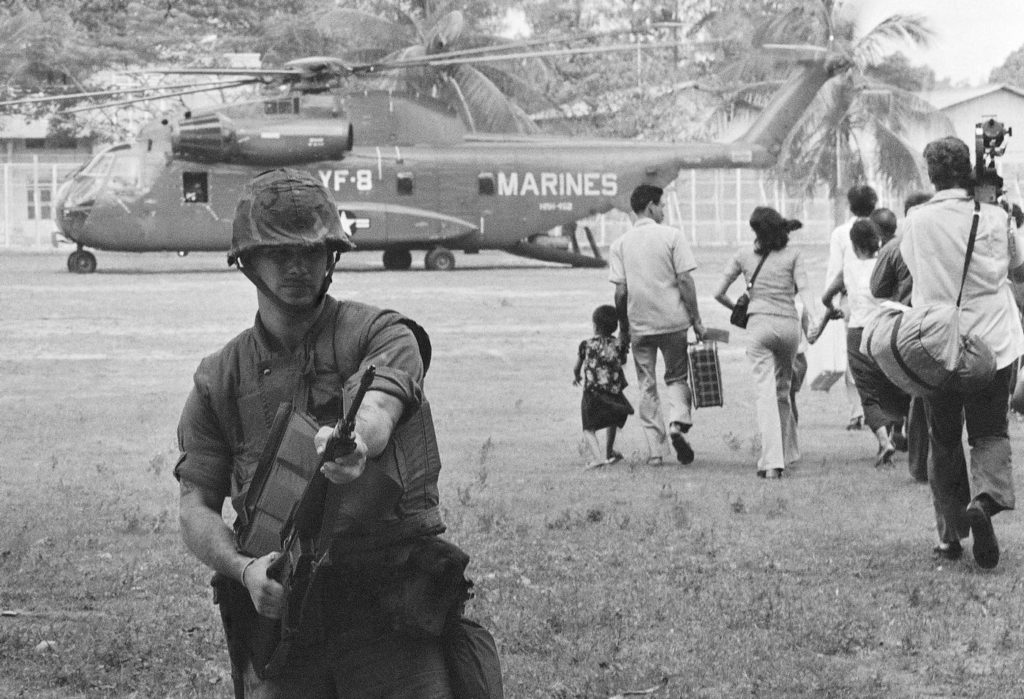
By April 15th the last defences of the city were overcome by the communists and in the early morning of April 17th General Mey Si Chan of the Khmer Republic’s “Khmer National Armed Forces” (FANK) ordered all FANK forces to cease firing since “negotiations were in progress” for the surrender of Phnom Penh.
While the civil war was now officially over, the Khmer Rouge communist guerrilla group led by Saloth Sar, better known by his nom de guerre Pol Pot, proclaimed the newly establish “Democratic Kampuchea”. Pol Pot declared that “Year Zero” had begun which is an analogy to the “Year One” of the French Revolutionary Calendar.
On the same day (April 17) the forces of the Khmer Rouge moved into Phnom Penh and immediately controlled all movements in and out of the city. Pol Pot was committed to “purify” Cambodian society of capitalism, Western culture, religion and all foreign influences. He wanted to transform Cambodia into an isolated and totally self-sufficient Maoist agrarian state. Foreigners were expelled from the country, embassies closed, and even the local currency was abolished. Furthermore, markets, schools, newspapers, religious practices and private property were forbidden. A truly sick man who trumped Adolf Hitler!
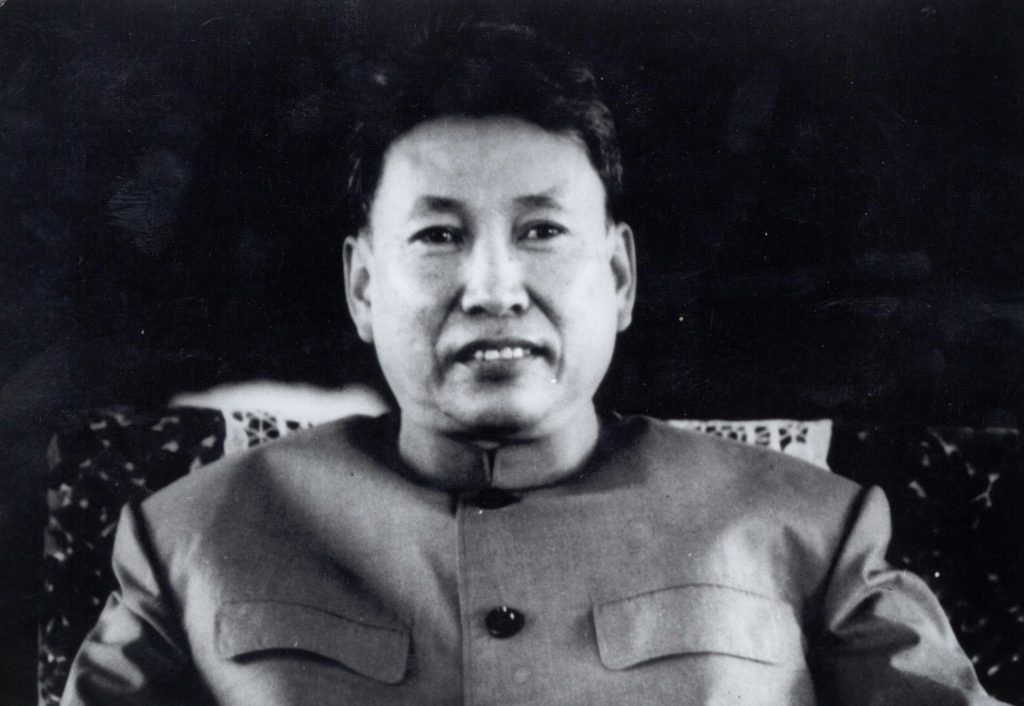
The Khmer Rouge regime rounded up and executed almost everyone suspected of connections with the former Cambodian government or ties with any foreign governments. They also targeted professionals and intellectuals, as well as demographic targets such as monks, ethnic Vietnamese / Thai / Chinese, ethnic Cham Muslim minority, and Christians. Sounds like Adolf Hitler, doesn’t it!
The Khmer Rouge forced all city residents from the city into the countryside and many were sent into labour camps spread out across Cambodia. An estimated half a million or more Cambodians fled to refugee camps across the Thailand borders while many others became refugees in the United States, France and other welcoming countries. During the three years, eight months, and 20 days of the Khmer Rouge’s brutal rule, an estimated 2 to 3 million Cambodians (about 30% of the country’s population) died by starvation, torture or execution. This means that almost every Cambodian family was affected by the death or disappearance of relatives.
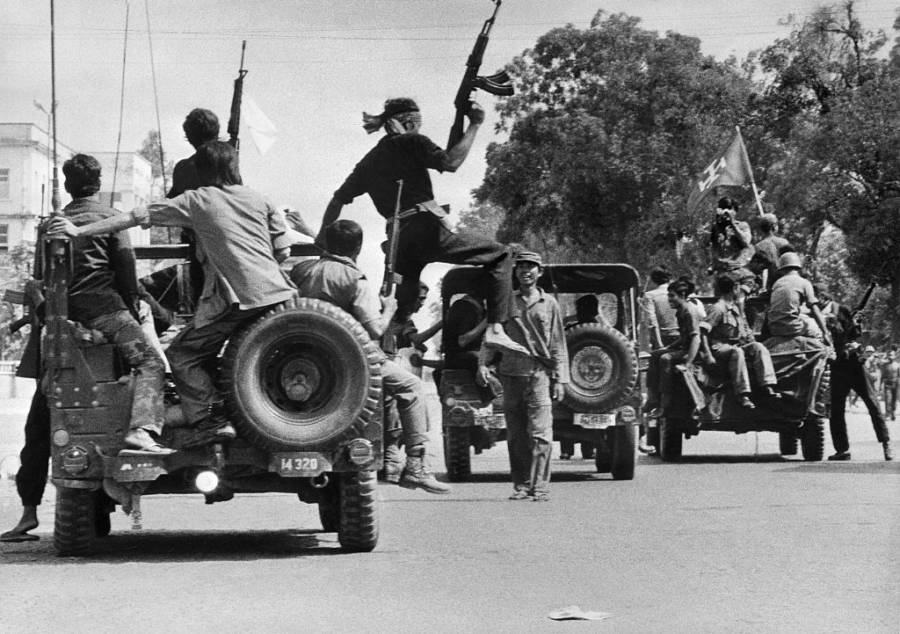
On December 25,
Recent excavations of some 20,000 gravesites revealed 1,386,734 victims of the Khmer Rouge.
The next few photos are from one of the “Killing Fields” called Choeung Ek outside the Cambodian capital, Phnom Penh.

The photos above were taken at the Choeung Ek killing field which is the location of a former orchard and mass grave of victims located about 17 km south of Phnom Penh. Prisoners were mainly brought here at night from the Tuol Sleng detention centre in the city (see photos below). While they were executed by axe and hammers, loud music was played to drown out their screams.
A tree on the site (photo above) has been pointed out by Kaing Guek Eav, one of the Khmer Rouge’s killers, as the place where babies’ heads were crushed before throwing them into the mass open graves. He explained that the babies were killed “to stop them from growing up and taking revenge for their parents’ deaths”.
Excavations at Choeung Ek have uncovered 8,895 bodies of men, women and babies. A memorial marked by a Buddhist stupa has acrylic glass sides (see photo below) which is filled with more than 5,000 human skulls. The cracks and piercings of the skulls are clearly visible.
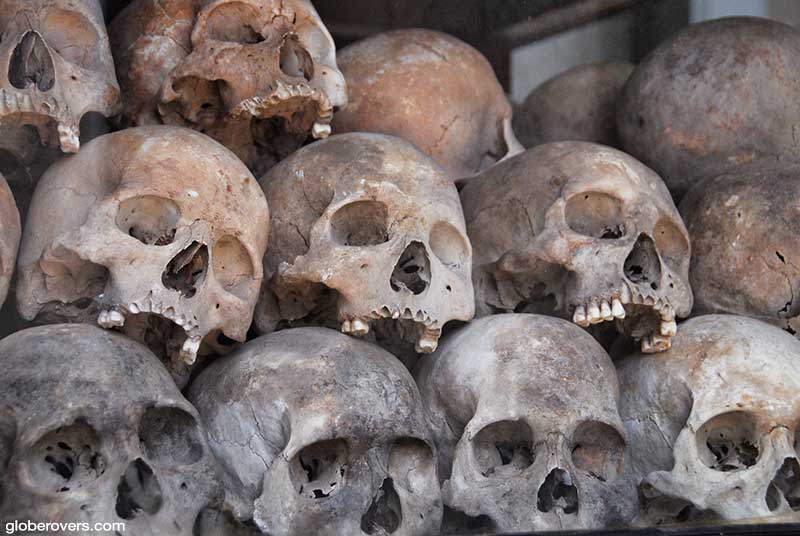
It wasn’t until 1997 when the Cambodian government asked the United Nations for assistance in setting up a genocide tribunal and then it took nine years to agree on the court structure. The names of five possible suspects for prosecution were eventually released on July 18, 2007 – a whopping 29 years after the Khmer Rouge were forced out. During this time many of the killers already died a peaceful death in the comfort of their homes.
Why the United Nations could not have launched the prosecution immediately after the Khmer Rouge were forced out, is a mystery. Once again an example of how ineffective the UN is.
It is a very emotional experience to visit one of the Killing Fields locations such as Choeung Ek as well as the notorious Security Prison 21 (S-21) which now is known as the Tuol Sleng Genocide Museum. Tuol Sleng means “Hill of the Poisonous Trees” or “Strychnine Hill”. The Tuol Sleng location was only one of about 150 execution sites across Cambodia where about 20,000 prisoners there were executed. The photos below clearly show that many of the killed were children and teenagers.
The next few photos are from the Tuol Sleng Genocide Museum in Phnom Penh.




Tuol Sleng Genocide Museum, Phnom Pehn, Cambodia
Many of those who were executed were babies and small children.
While visiting the gruesome Killing Fields of Cambodia, it is necessary to experience the leftovers of a forgotten genocide.



Blog post and photos by Peter who has been travelling almost full-time since 2005 and has been to over 122 countries. He visited several countries, such as Japan, more than 20 times. Peter is Editor-in-Chief and Publisher of GlobeRovers Magazine, an independent travel magazine focused on intrepid destinations.

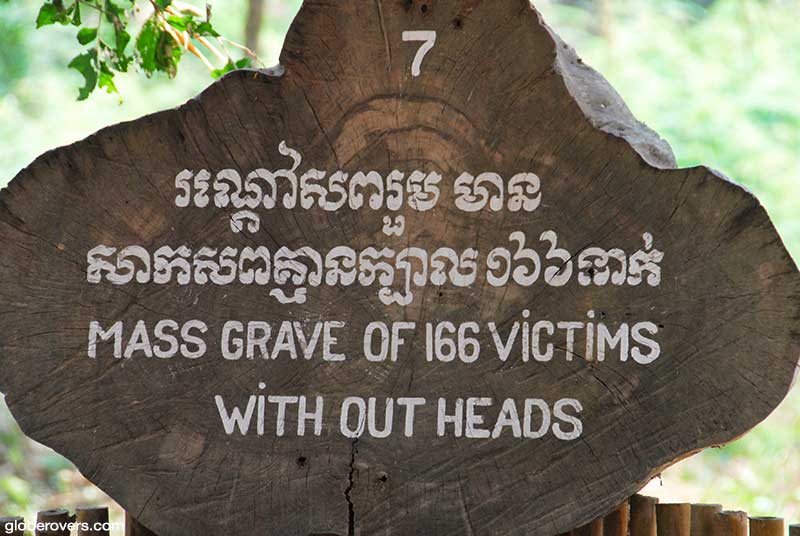
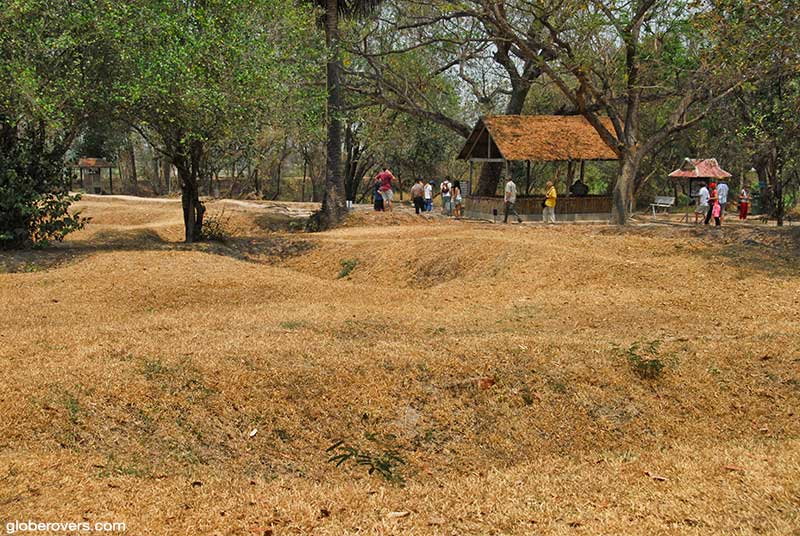

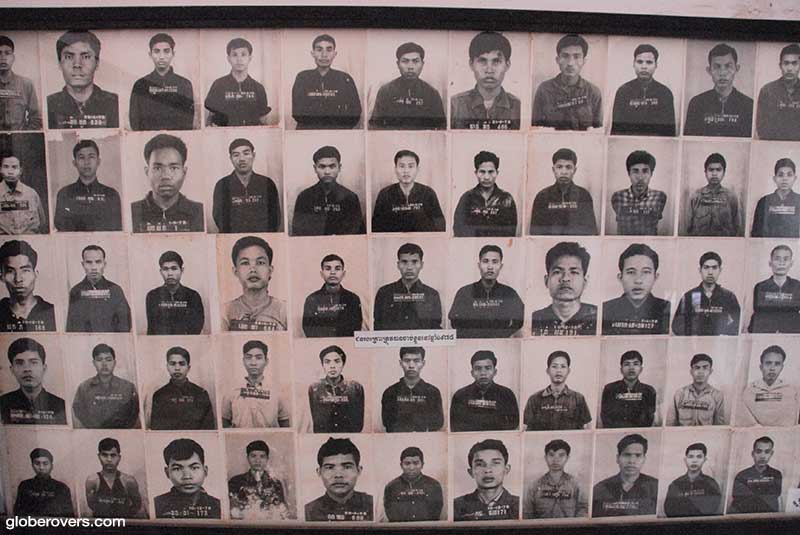
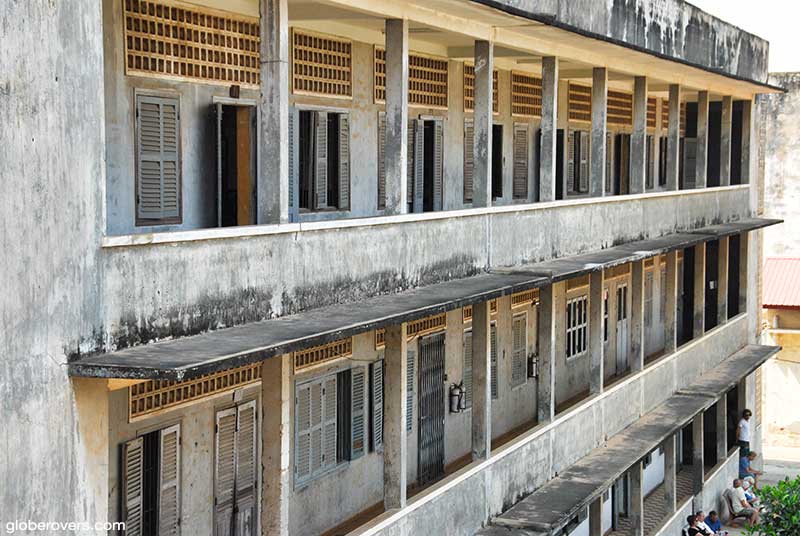
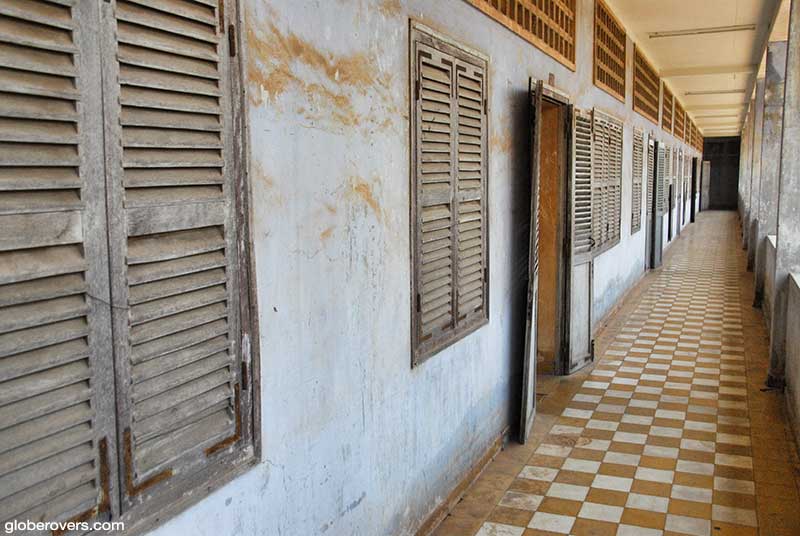
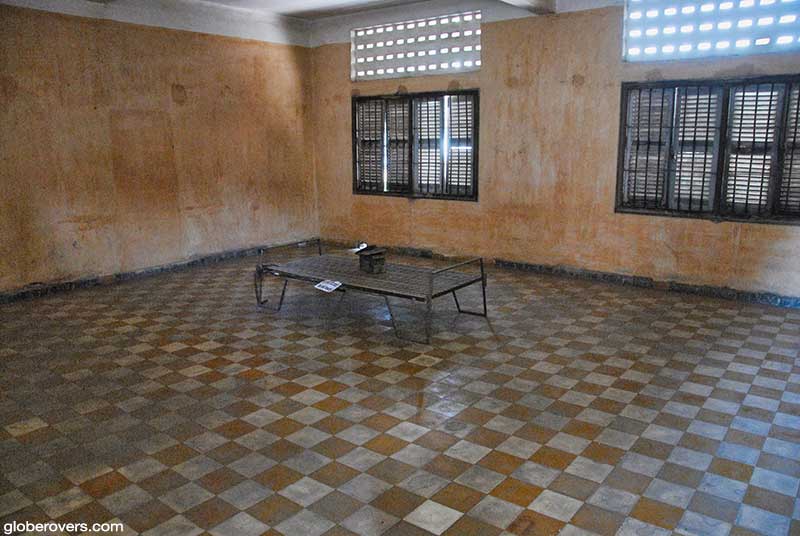
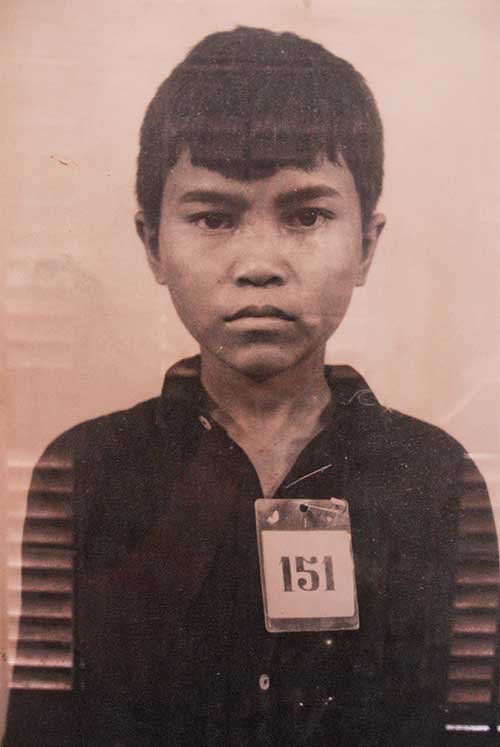
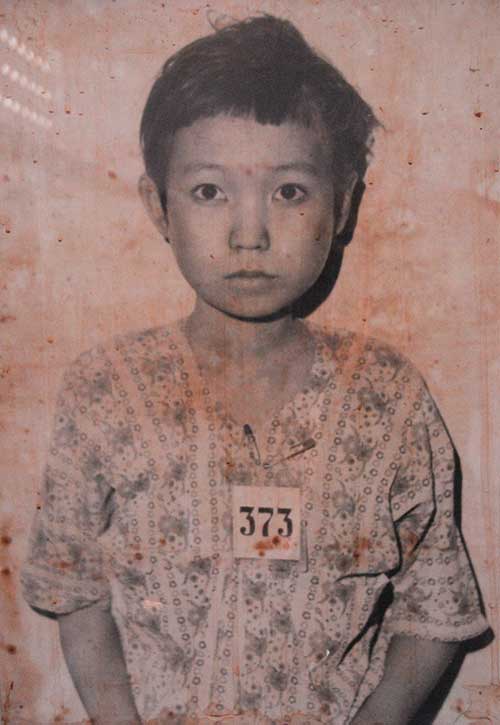
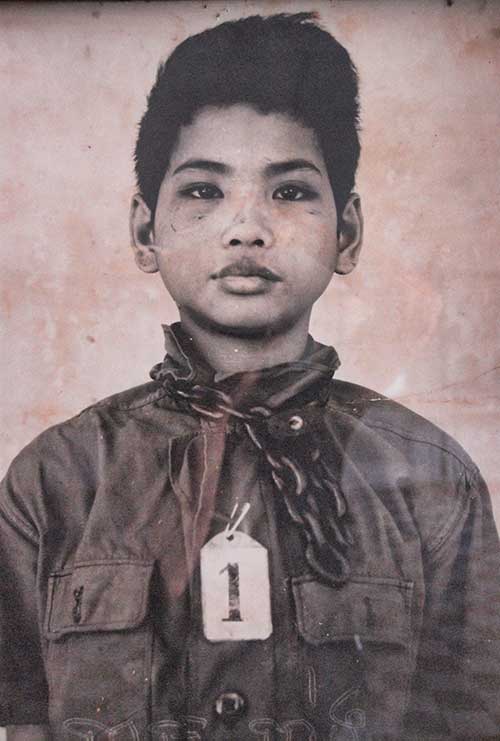
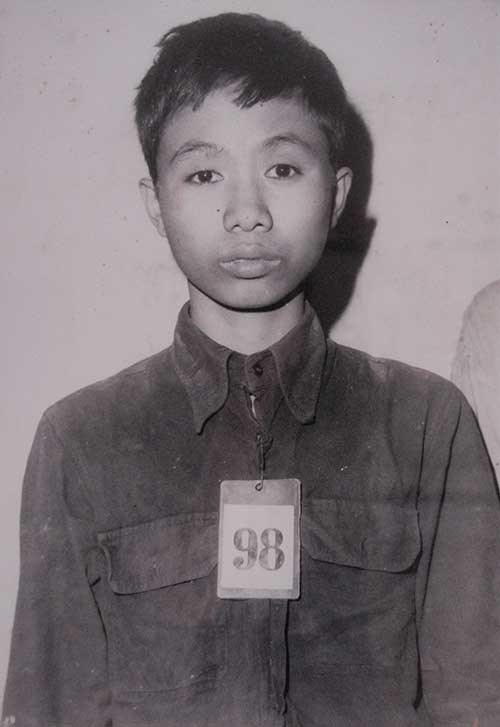
1 comment
[…] are to teach, for example, about the Holocaust, the Holodomor, Mao’s Great Leap Forward, or the Killing Fields of Cambodia, what are we to make of it? We are humans, and it was humans who tortured, starved, […]